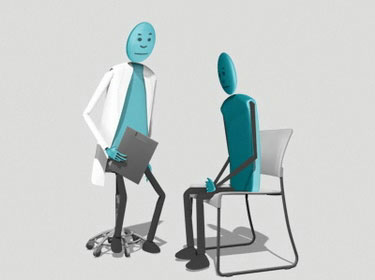On this page
Overview
Some people require therapy to support a vital function that is necessary for life. They must take time away from their normal everyday activities to receive the therapy, whether they provide it themselves or it's provided by someone else.
The DTC aims to offset some of the costs related to an impairment by reducing the amount of income tax you may have to pay.

Video for life-sustaining therapy
Note on the video: The eligibility criteria about type 1 diabetes in the video and transcript are outdated and only apply to 2020 and prior years. Consult the eligibility criteria below for the eligibility criteria for 2021 and later years.
Examples of people who may be eligible
Lisa’s son Nicolas needs insulin therapy

Lisa is a single parent. Her son, Nicolas, needs insulin therapy.
Lisa applied for the DTC for her son. As a result of the information provided by the medical practitioner on the application form, Nicolas is now eligible for the tax credit based on the time he and his mother must take to manage his treatment, and the frequency it is received.
Lisa may claim the tax credit, which includes a supplement for people who are 17 years and younger at the end of the year.
Adam needs kidney dialysis

Adam is a university student. Before he got a kidney transplant, he needed kidney dialysis 14 hours per week.
Adam applied for the DTC. As a result of the information provided by the medical practitioner on the application form, Adam was eligible for the credit for the period he received dialysis.
As Adam has little taxable income and his parents help with his food, clothing, and shelter throughout the year, they may claim any unused portion of the tax credit.
Eligibility criteria checklist
If you have Type 1 diabetes
People with Type 1 diabetes meet the eligibility criteria under life-sustaining therapy. Medical practitioners no longer have to provide details of therapy for 2021 and later years.
You must meet all 4 criteria below. Check the boxes that apply.
-
- Dialysis
- Insulin therapy
- Oxygen therapy
- Chest physiotherapy
- Other therapies
-
Examples of what counts toward the 14 hours
Included in the 14 hours:
- Activities related to adjusting and administering medication or determining the amount of a compound that can be safely consumed
- Maintaining a log related to the therapy
- Managing dietary restrictions related to therapy that either requires daily consumption of a medical food to limit a particular compound, or requires a regular dosage of medication that needs to be adjusted daily
- Receiving life-sustaining therapy at home or at an appointment
- Setting up and maintaining equipment used for the therapy
- Time spent by another person to perform or supervise the therapy on behalf of a child or carry out activities like those listed above
- Time spent assisting a person who is unable to perform the activities related to administering the therapy because of the effects of the impairment(s)
Not included in the 14 hours:
- Exercising
- Managing any dietary restrictions or regimes that are not listed as included in the 14 hours
- Medical appointments that do not involve receiving the therapy or determining the dosage of medication, medical compound, or medical formula
- Obtaining medication
- Recuperating after therapy (unless medically required)
- Time a portable or implanted device takes to deliver therapy
- Travel time to receive therapy
If you’re not sure you qualify
Even if your answers indicate that you may not be eligible, you can still send in an application. CRA will determine your eligibility based on the information given by your medical practitioner.
Page details
- Date modified: